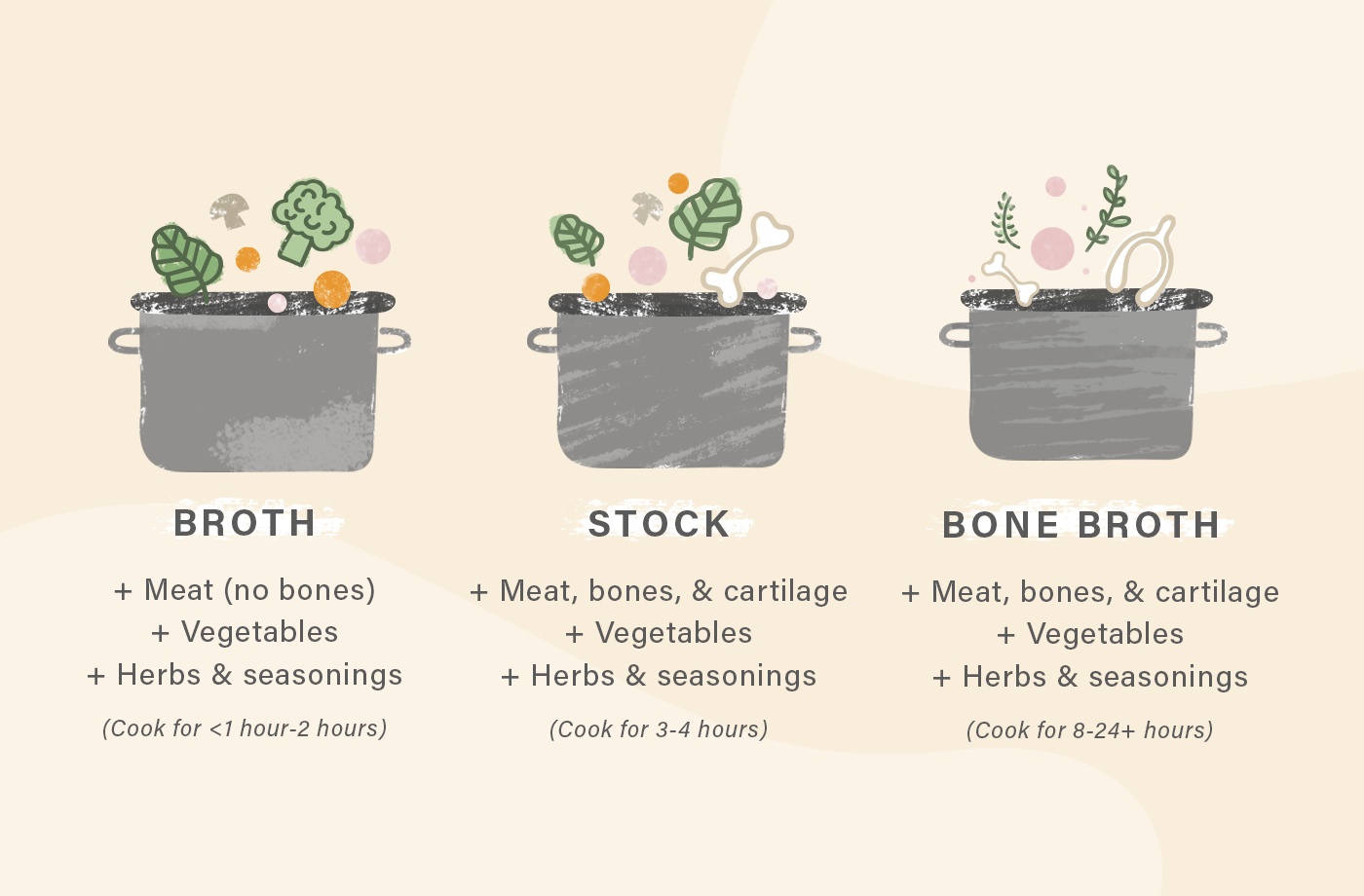This Handy Chart Breaks Down Broth Vs. Stock, Showing When to Use Each One
Well, wonder no more, ye soup-curious: I'm here to report that we've finally nailed down the idiosyncrasies of each pantry staple. In an Instagram story from last week, meal-prep queen Amanda Meixner (who goes by @meowmeix on IG) shared a chart that boils down (get it?) the merits of each brew. So ready your Instant Pots, everyone—this is pertinent sweater-weather information.
- Sonya Angelone, MS, RDN, nutritionist and registered dietitian based in San Francisco, California
Finally: How to make (and use) broths, stocks, and bone broth.

Broths
"Typically, broth is made mainly from meat like chicken or beef, and should take anywhere from 45 minutes to two hours to cook," says Sonya Angelone, RDN. "It is thin and light in flavor." Although broth used to only refer to meat-based liquids (there's a fun fact to roll out during dinner conversation), you can now buy vegetable broth, too.
Use it for: Anything you want to have a thinner consistency. Think: gravies, soups, casseroles, stir fries, and cooked grains or legumes.
Hot tip: Use broth when you want the flavor of the liquid to really shine through in the dish.

{{post.sponsorText}}
How to make: Make your own broth at home with this chicken broth recipe and this vegetable broth recipe.
Stocks
Slightly thicker than broth, stock is usually made by simmering a combination of bones, meat, vegetables and herbs for three to four hours, says Angelone.
Use it for: Anything from the above list for broth-based dishes that you'd like to have a slightly thicker consistency.
Hot tip: Use stock when you don't want the liquid component to outshine other flavorful ingredients in the dish. Think of this base as you dish's background dancer.
How to make: Head here to see how to make homemade chicken stock.
Bone broth
"Bone broth is basically stock, and is defined by its thickness or viscosity due to the collagen that seeps out during the long cooking process," Angelone explains. Unlike stock, however, the bones are boiled for anywhere between eight and 24 hours to allow the larger bones and cartilage to break down into collagen, which offers a plethora of bone broth benefits. "These are removed to make the final broth. The bones are prepared by first roasting in the oven, possibly with some vegetables...The vegetables are strained out, leaving a liquid that gets thick as it cools due to the collagen," she adds.
Use it for: Enjoy this one all on its own or in your morning latte.
How to make: Follow this recipe to see how to make bone broth at home.
Vegetarian and vegan broths, plus substitution ideas
If you follow a vegetarian or vegan diet, obviously vegetable broth is going to be your go-to, rather than using a meat-based stock or bone broth. This certainly doesn't mean your meal will be lacking in flavor. The flavors from the vegetables and herbs seep into the water, making it full of flavor (and healing benefits). Below are three vegan broths you can make at home:
1. Gut-healing vegetable broth: This stomach-soothing broth is made with wakame seaweed, garlic, onions, shiitake mushrooms, and ginger, among other nourishing ingredients.
2. Vegetable soup and broth: This anti-inflammatory broth is made with turmeric, ginger, and coconut oil.
3. Miso vegetable broth: Since miso is a fermented food, it's great for your gut. Also in this broth are white onions, garlic, mushrooms, thyme, and kombu flakes.
If you don't have any broth on hand, bouillon cubes are a popular substitute. All you do to use it is mix one of the cubes with a cup of boiling water. The cube will dissolve into the water and voila—broth!
Originally published December 10, 2018. Updated August 7, 2020.
Loading More Posts...